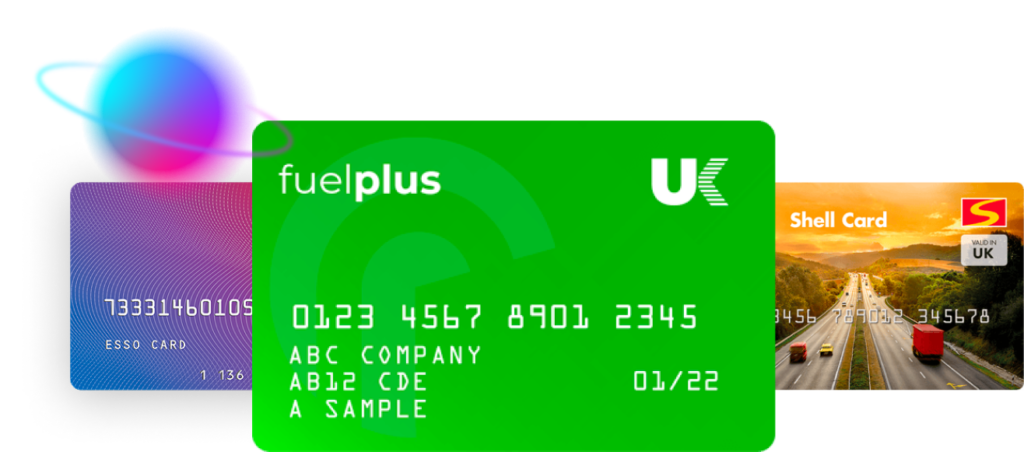Multi-fleet management involves ensuring all of your vehicles are running smoothly to maximise efficiency and reduce costs.
This can be challenging, especially if you have a large fleet of vehicles as you’ll have multiple drivers making multiple trips. This makes it increasingly important to have visibility over your fleet, ensuring a smooth operation.
In this guide, we’ll exploring multi-fleet management strategies to help you cut costs and boost efficiency, covering areas such as:
- Keeping your fleet in good condition
- Optimising routes to reduce time and fuel consumption
- Managing your fuel costs
- Utilising digital tools and software
- Educating and training your staff
By following these tips, you can better manage your fleet, streamlining your operations in turn and boosting your bottom line.
At FuelQ, our fuel cards put money straight back into your business. Save on every fill-up, track spending with our 24/7 online dashboard, and unlock exclusive discounts on repairs and maintenance.
Why Is Multi-Fleet Management Important?
Managing a single vehicle is one thing, but managing a whole fleet is more complex. Costs can quickly ramp up, especially if you’ve not got visibility over spending and driver behaviour.
Multi-fleet management gives you that visibility, allowing you to see how your fleet is operating so you can make more informed decisions going forward.
For example: Are your drivers taking long, unnecessary trips that lead to multiple stop offs? There might be a better, more direct route that allows for improved fuel consumption.
By putting a system in place that allows you to better manage your fleet, you can stay on top of costs, identify any suspicious activity, and resolve issues early.
Whether you’re operating five vehicles or fifty, multi-fleet management is not a nice to have, it’s a key part of your business operations that ties directly into your profits.
Let’s start by understanding Cost Per Mile (CPM) and how tracking it can help you improve both efficiency and cost control.
What is cost per mile (cpm)?
Cost Per Mile (CPM) is a metric that tells you how much it costs your business for every mile your vehicle (or fleet) travels. It helps you track true operating costs that go beyond just fuel, giving you the full picture.
It’s calculated using the following formula:
CPM = Total Operating Costs ÷ Total Miles Driven
Total operating costs often include things such as:
- Fuel
- Insurance
- Maintenance and repairs
- Road tax and licensing
- Depreciation (loss in vehicle value over time)
- Lease or financing payments (if applicable)
For example: If a vehicle racks up £15,000 in operating costs over a year and travels 30,000 miles, the CPM is £0.50 per mile (as £15,000 ÷ 30,000).
Every mile your fleet travels comes at a cost. However, by focusing on the strategies listed below, you can reduce your CPM, extend the life of your vehicles, and improve your overall profitability.

Multi-Fleet Management Strategies
The strategies below can help you better manage your fleet of vehicles, regardless of the size of your business.
Keep your fleet in good condition
Your first priority needs to be keeping your fleet in good condition through regular checks and servicing. Not only does this reduce downtime but also extends the lifetime of your vehicle, thereby saving you more money in the long run on replacements.
Your fleet is a valuable asset and it needs to be looked after. By conducting regular checks you’ll be able to rectify any faulty parts, which if left unknown, can increase fuel consumption and the likelihood of a breakdown.
Simple maintenance tasks like checking tyre pressure can make a significant difference as underinflated tyres increase fuel consumption and cause premature wear.
As well as servicing, MOTs are essential for keeping your vehicles legally roadworthy and identifying potential issues before they get worse.
With the FuelQ card, businesses can get 7% off Halfords essentials, and claim a free MOT when you book a full or major service.
Start saving now by applying for a FuelQ card in minutes.
Optimise driving routes
Knowing the best routes for drivers to take is one of the most effective ways of managing your fleet whilst also improving efficiency.
By planning the most direct or least congested route, you can reduce fuel consumption, minimise wear and tear on the vehicle, and improve time management. Regardless of what job your drivers are doing, being stuck in traffic is not a productive use of their time.
Therefore by optimising routes and better planning journeys, drivers can complete more jobs in a day and reduce delays, leading to better customer satisfaction overall.
There are lots of tools you can use for this such as:
- Google Maps
- Waze
- Verizon Connect
- Route4Me
These tools allow drivers to see traffic in real time as well as any road closures so they can choose the best route for that journey. It’s a proactive approach to multi-fleet management allowing drivers to avoid delays before it’s too late.
Manage your fuel costs
It can feel difficult staying on top of your fuel costs if you’ve got a fleet of vehicles. After all, you’ll have numerous drivers using different vehicles and filling up at different stations. This can be challenging to control as drivers will either have to pay out of their own pocket or keep track of receipts for reimbursement.
This is where using a business fuel card comes into play as drivers across your fleet can use it the same way they would a debit or credit card. They simply fill up at the pump then use the card to pay for the fuel which is then linked to a central dashboard.
From here you have complete visibility over how much is being spent, the vehicle being used, and where. This allows you to control your budgets better and also to spot any fraudulent or suspicious activity.
Aside from streamlining operations, fuel cards also lead to greater savings. Typically, diesel users typically save up to 10% against average pump prices and unleaded is usually fixed at 3p at the pump.
Use digital tools and software
Managing a multi-vehicle fleet manually can quickly become overwhelming, but with the right digital tools, it’s far easier to stay in control.
Fleet management software gives you a centralised dashboard to monitor vehicle locations and schedule maintenance. Telematics systems can provide insights into driver behaviour, helping you improve safety, reduce wear and tear, and encourage better driving habits. Route planning tools (as discussed above) also play a key role, allowing you to optimise journeys and minimise time spent in traffic.
Furthermore, integrating systems like FuelQ business fuel cards can give you detailed oversight of fuel usage across your entire fleet.
You’ll be able to see how much each vehicle is spending, where it’s being filled up, and easily track this against performance data. By having this level of visibility, you can make more accurate budgeting decisions that help prevent fuel misuse and control over operating costs.
Educate and train your staff
Your drivers play a vital role in multi-fleet management as they’re the ones behind the wheel, after all. That’s why you need to engage them in the importance of driving economically and saving fuel where possible.
This includes things such as:
- Driving smoothly, avoiding harsh acceleration and braking
- Keeping to sensible speeds and avoid driving faster than necessary
- Switching off the engine when idling
- Using engine braking when slowing down or going downhill, rather than continuing to accelerate
- Skipping gears where appropriate to maintain efficiency
Consider running workshops or talks focused on eco-friendly driving techniques as these can lead to improvements in fuel efficiency. It’s also worth educating drivers on the importance of vehicle maintenance, so that services and MOTs aren’t missed.
As we’ve mentioned earlier in this blog, keeping your fleet in good condition is key to avoid unnecessary downtime and delays. This also links back to the value of embracing digital tools, which can send automatic reminders when vehicle checks are due, helping ensure nothing slips through the cracks.
Consider the structure of your fleet
Optimising your fleet structure not only helps you reduce costs, it also means you’re not compromising performance.
Start by assessing whether every vehicle in the fleet is still fit for purpose i.e. are certain vehicles too large for their current load requirements, or are some barely being used at all?
By identifying any underused vehicles, you can streamline operations and reduce idle assets. Also consider downsizing where appropriate and switching to more cost-effective alternatives such as smaller vehicles, or even vehicle-sharing schemes.
Reviewing your fleet structure ensures that the fleet evolves alongside changing business needs, rather than relying on legacy choices.

Multi-Fleet Management: Tips to Cut Costs and Boost Efficiency
Multi-fleet management is important to running a smooth, profitable business.
Regardless of the number of vehicles in your fleet, implementing the strategies in this blog ensures you have visibility and control over spending.
Fuel is an important part of multi-fleet management. When drivers are on the road, it’s difficult to know where they’re filling up and how much they’re paying at each station. However, by signing up for a business fuel card, you’re giving drivers a simple and trusted way of paying for fuel without the fuss.
Aside from fuel, these cards give you exclusive discounts to regular maintenance checks and repairs, extending the lifetime of your vehicles and helping boost your bottom line further. With the FuelQ card, businesses can get 7% off Halfords essentials, and claim a free MOT when you book a full or major service.

